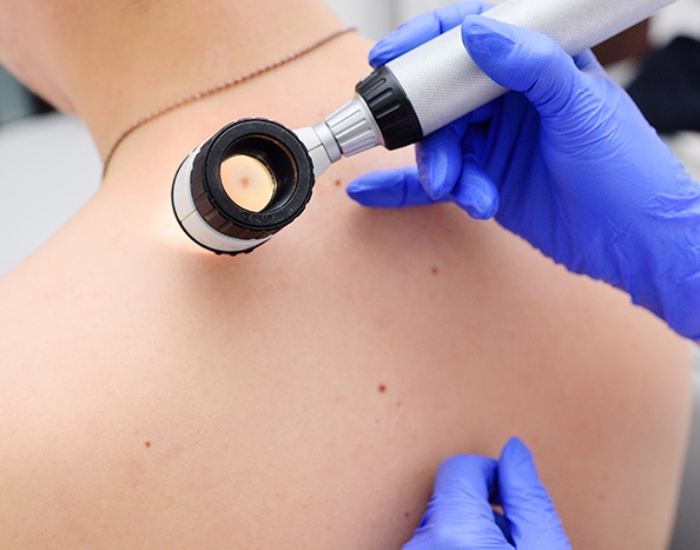Your hair, skin, and eyes get their color from a pigment in the skin called melanin. This pigment is produced in a type of cell called a melanocyte. These are the cells from which melanoma cancer grows. This is a serious form of skin cancer which is usually first found by a family member, friend, or the patient. If you start to notice suspicious or unusual spots on the skin, you should consult a doctor immediately to make sure it is benign.
If you or a loved one is diagnosed with melanoma, we are sure you have a lot of concerns and questions. Which treatment paths are available? Which one do you choose? Where can you get the best care for the patient?
First, when you get a checkup from your doctor, they will ask you for your medical history, check for any enlarged lymph nodes, as well as details on:
- How long you are exposed to the sun
- Your family’s history with melanoma (if any)
- When the spot first appeared/was noticed
- Changes in the sport since its appearance/since it was first noticed
Skin biopsy
After this exam, if the doctor believes there is concern that the spot may be related to melanoma, they will likely order a biopsy. This requires a piece of your skin tissue to be examined under a microscope by a pathologist, a doctor specializing in diagnosing diseases. This will help further determine the presence of melanoma cells in the tissue.
Noninvasive Techniques for Melanoma Diagnosis
Besides this, another method to help doctors understand the melanoma better is known as dermoscopy. This is quite a common approach to non-invasively diagnose melanoma. Dermoscopy involves using a handheld device, a dermoscopy, called a Dermatoscope. It is composed of a powerful microscope and a light that gives doctors a closer look at the skin. This close-up helps determine the presence of the melanoma as well as its severity.
After this step, if the melanoma is confirmed, a team of doctors will need to diagnose which type of melanoma it is, and what stage it is. This is a crucial measure taken that determines the treatment plan that best suits the patient.
FISH Tests and CGH Tests
Methods of determining the exact type of melanoma in cases that are difficult to diagnose are fluorescence in situ hybridization (FISH) and comparative genomic hybridization (CGH). These are molecular tests that take the DNA of the concerning spots on the skin and analyze them to understand their nature. These methods are especially useful to diagnose nevoid melanoma and spitzoid melanoma, both of which are harder to catch as they do not show up as harmful under regular microscopes.
Genomic Testing for Advanced Melanoma
Genomic testing, tumor sequencing, or molecular profiling are all different names for the same test. This test is done by taking the melanoma cells and checking for any genetic mutations in those cells, which could indicate to the type of cancer that the case might be dealing with.
This test helps doctors come up with a targeted plan to fight the tumor, considering the genetic changes it has gone through since first cropping up. This information about the genetics of the tumor is also handy in predicting the possibility of cancer resurfacing after the treatment. With this information, doctors will be able to tackle the problem in a way that ensures the tumor will not grow back.
These genetics, however, belong to the cancer cells and not to the cells native to your body. This means cancer will not be genetic i.e. it cannot be passed onto the patient’s children.
Why Premier Oncology is the right choice
With cancers like melanoma, it is quite challenging for a doctor to make the best call possible for the patient. Therefore, having cutting edge testing and diagnostic tools gives Premier Oncology an edge above other cancer hospital. These tools make the diagnostic process easier for the team of doctors that are dedicated to giving the best care possible to the patient.

